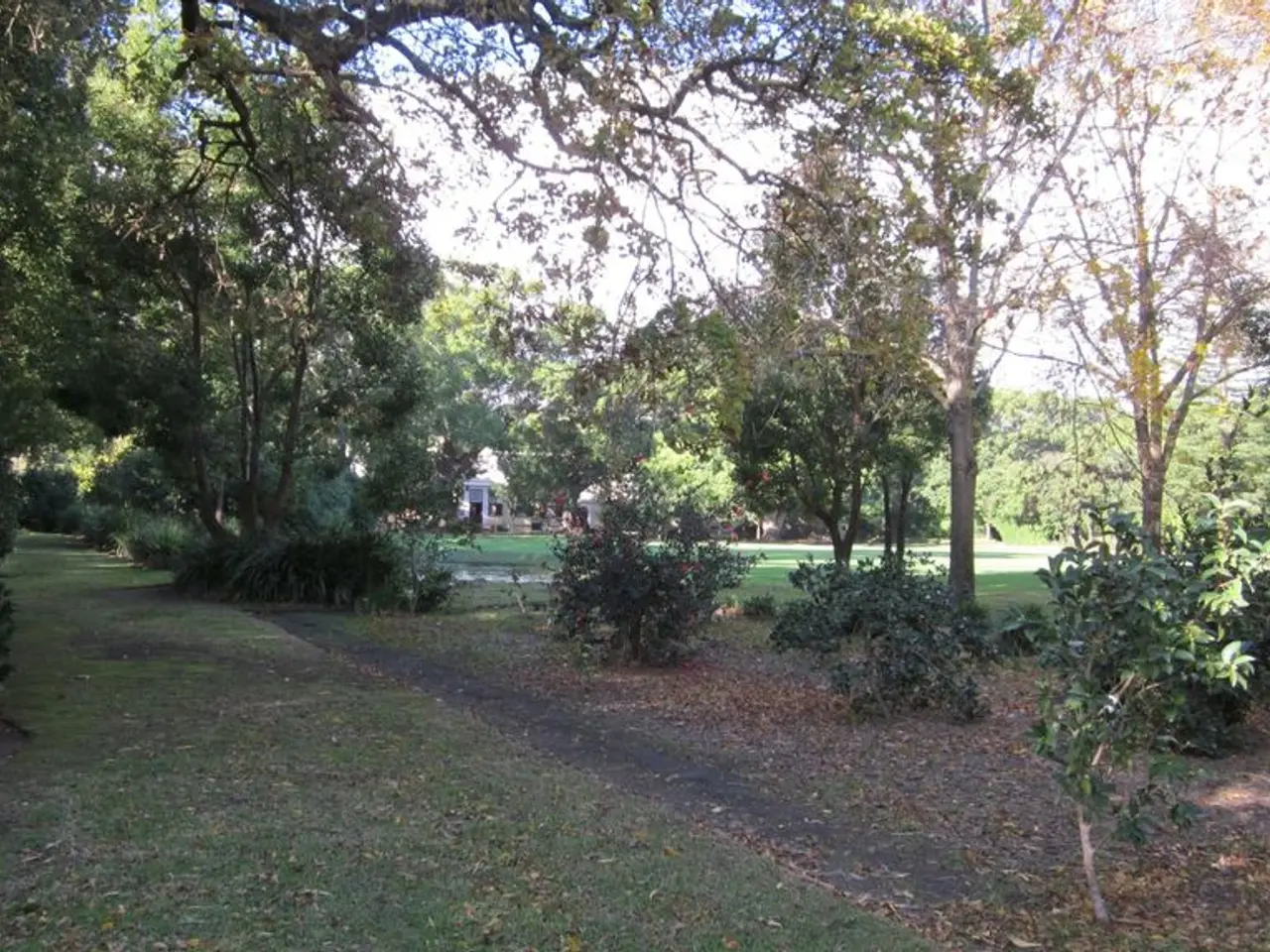Meta's AI-Powered Forest Mapping Innovation Revolutionizing Carbon Monitoring
Meta's AI-Powered Canopy Height Map Revolutionizes Forest Carbon Monitoring
Forests play a vital role in combating climate change, absorbing around 30% of human-caused CO2 emissions annually worldwide. To enhance the monitoring and verification of forest carbon projects, Meta has developed an AI-powered canopy height map that provides high-resolution, global, and fine-scale data on tree canopy heights.
The canopy height map, named Every Tree Counts, offers several key improvements:
- Better Project Planning: The map helps identify optimal forest parcels, delineate project boundaries, and assess forest structure for carbon projects, supporting methods like Verra VM0045, VM0047, and the American Carbon Registry IFM.
- Dynamic Baselining: The map enables updating carbon stock baselines over time with real, observed forest growth or loss, which is crucial for accurate carbon credit accounting and reflects true forest conditions.
- Enhanced Disturbance Detection: The map detects small-scale forest changes such as selective logging or degradation, improving accuracy in monitoring reversals (loss of carbon gains) from fires or logging.
- Open-Source Accessibility: The canopy height map and AI model are freely available, increasing transparency and enabling widespread adoption by forest project developers globally.
- Integration of Advanced Data Sources: By combining high-resolution satellite imagery with lidar data using AI, the model overcomes traditional remote sensing limitations, allowing detailed canopy height estimations worldwide.
- Improved Accuracy: Validation tests show a low mean error (about 2.8 meters in US forests and 5.1 meters in Brazil), supporting credible Monitoring, Measurement, Reporting, and Verification (MMRV) of forest carbon credits.
Meta's partnership with DINOv3 AI further refines canopy height estimation, reducing height errors to as low as 1.2 meters in African test areas, enabling real-time monitoring of sapling growth and forest restoration at scale with minimal computing needs.
However, using the model requires significant computing power and technical expertise, which may limit adoption. Integrating advanced models like Meta's into accessible platforms, alongside collaborative standard-setting, will be crucial to scaling reliable forest carbon monitoring and verification.
Remote sensing, the method used to gather information about forests without going there in person, offers great promise for forest carbon projects. However, it faces barriers such as lack of universal agreement on acceptable methods or datasets, limited technical skills, computational capacity, and access to affordable, high-quality datasets.
Meta's AI model is used in forest carbon projects for improved forest management, afforestation, reforestation, and revegetation. The model supports methods from carbon credit standards, which is important for those who need dynamic baselining or updating project baselines with real data from nature.
Experts recommend clearer standards for how datasets can be used, better reporting on uncertainty, clearer rules for issuing carbon credits, a global benchmarking database with verified data, and a central portal for quality datasets to boost adoption. Meta's open-source AI model contributes to this goal, making it easier for forest project developers to plan, monitor, and verify their carbon projects.
The global canopy height map uses images from 2009 to 2020, which means it might not show current forest conditions, requiring updated maps. Meta's AI-powered canopy height map enhances the precision, transparency, and scalability of forest carbon monitoring and verification, which are crucial for credible carbon markets, improved conservation/restoration planning, and tracking climate action progress worldwide.
In a recent development, Meta and Microsoft have secured long-term carbon credit deals to support the Olympic Rainforest. This partnership underscores the potential of AI-powered solutions in driving sustainable forest management and contributing to global efforts against climate change.
[1] Meta. (2021). Meta's AI-powered canopy height map improves forest carbon monitoring and verification. Retrieved from https://research.fb.com/2021/09/03/metas-ai-powered-canopy-height-map-improves-forest-carbon-monitoring-and-verification/
[2] Meta. (2021). Meta's canopy height model. Retrieved from https://research.fb.com/2021/09/03/metas-canopy-height-model/
[3] Meta. (2021). Meta's AI-powered canopy height map: Methodology. Retrieved from https://research.fb.com/2021/09/03/metas-ai-powered-canopy-height-map-methodology/
[4] Meta. (2021). Meta's AI-powered canopy height map: Validation. Retrieved from https://research.fb.com/2021/09/03/metas-ai-powered-canopy-height-map-validation/
[5] Meta. (2021). Meta's partnership with DINOv3 for improved canopy height estimation. Retrieved from https://research.fb.com/2021/10/08/metas-partnership-with-dino3-for-improved-canopy-height-estimation/
- In the realm of climate tech, Meta's AI-powered canopy height map, named Every Tree Counts, is revolutionizing the monitoring and verification of forest carbon projects by providing precise and extensive data on tree canopy heights.
- Leveraging advanced AI, Meta's canopy height map supports projects adhering to standards such as Verra VM0045, VM0047, and the American Carbon Registry IFM, and it enables dynamic baselining, enhanced disturbance detection, and open-source accessibility for forest project developers worldwide.
- The integration of artificial intelligence into forest carbon projects has significant potential, as demonstrated by Meta's partnership with DINOv3 AI, which refines canopy height estimation and enables real-time monitoring of sapling growth and forest restoration.
- As scientists work to combat climate-change and protect the environment, advanced technologies like Meta's AI-powered canopy height map play a crucial role in improving the accuracy, transparency, and scalability of forest carbon monitoring and verification, essential for credible climate markets, conservation/restoration planning, and tracking climate action progress worldwide.




